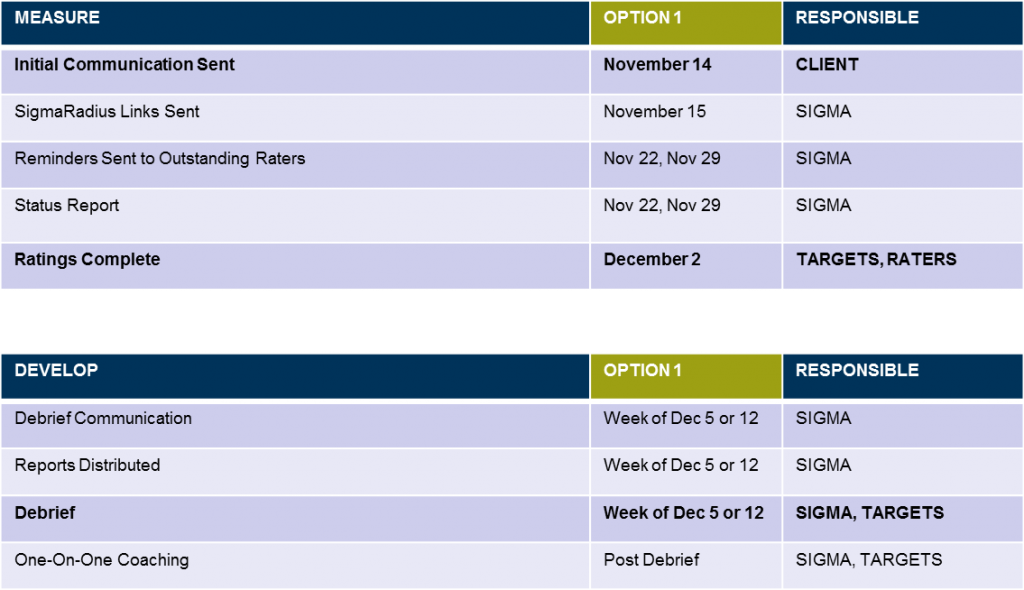Preparing Employees for 360 Degree Feedback
Preparing Employees for 360 Degree Feedback
To ensure your next 360 Feedback process is successful, a little planning and preparation can go a long way. With this in mind, here is how you can ensure you are delivering a transparent process that minimizes anxiety and maximizes the value for everyone involved.
1. Why
A clear understanding of the 360 Feedback initiative’s objectives will help you know what to measure and who to involve. If you can’t answer why you are doing a 360 Feedback, don’t start.
2. What Is Measured
Your 360 process should measure what’s important for success in your organization. Connect the 360 tool to organizational success. Communicate how and why it’s successful to employees.
3. Who Selects the Raters
This simple, yet important question has a critical impact on employee buy-in. Giving the employee sole autonomy over rater selection or involving the supervisor in final approval of raters is preferred.
4. Who Sees The Results
If you are using 360 Feedback in a pure development context, the employee owns the results and controls who gets to see them. However, there is nothing inherently wrong with requiring the results be shared with the supervisor and/or HR. Transparency is the key. So whatever approach you adopt, communicate the approach from the beginning.
5. The Timeline
This does not need to be a full-blown project plan. A simple list of major steps and when they will happen is all you need. Below is a timeline example:

6. What Happens Next
We’ve all been through leadership development initiatives with a tonne of buildup and no follow through. So much so, that people typically come into a 360 initiative expecting the worst. Communicate what resources will be available (group debrief, one on one coaching, etc.) and provide a structured plan for supporting participants in their development.
7. Communicate
A poorly communicated 360 feedback process will create unnecessary anxiety for participants. Ensure all participants, including targets and raters, understand (1) why the 360 is being administered, (2) the timeline, and (3) how the feedback will be used.
8. Opportunities for Questions
It’s impossible to account for everything. Leave time and room for questions. And ensure there is a single point of contact for those questions. Even better is to conduct a simple prep session to outline everything we talked about above.
Contact us for more information about our SigmaRadius 360 Degree Feedback or information on preparing employees for 360 feedback.
